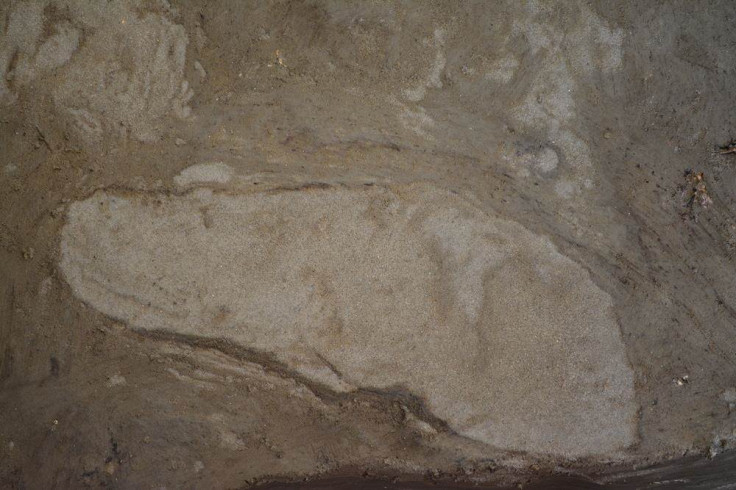Second Oldest Human Footprints Outside Africa Discovered in Lolland, Denmark

Archaeologists have discovered the first ever instance of preserved 5,000-year-old Stone Age human footprints in Denmark on the island of Lolland, which show that a complex fishing system was used to feed the prehistoric community.
These are the second-oldest human footprints to have been found outside Africa. The oldest footprints are 800,000 years old and were found in Happisburgh, Norfolk in February.
The footprints were found during excavations for the Fehmarn Belt link scheme. A new immersed tunnel is being built that will connect the southern Danish island of Lolland with Fehmarn island in Germany.
"This is really quite extraordinary, finding footprints from humans. Normally, what we find is their rubbish in the form of tools and pottery, but here, we suddenly have a completely different type of traces from the past, footprints left by a human being," said Terje Stafseth, Archaeologist at Museum Lolland-Falster.
"We are familiar with animal footprints, but to the best of my knowledge, we have never come across human footprints in Danish Stone Age archaeology before."
Near the footprints, 5,000-year-old gillnets fixed on stakes have been found, which has led the archaeologists to believe that the footprints were left behind by Stone Age fishermen.
The area is rich in fjords and streams, and the island would also have been battered by the sea. It is believed that the fishermen left the footprints behind while wading into water to save their system of fishing weir (a type of river barrier) from being flooded and washed away during bad weather.
At least two people are believed to have stepped out into the swampy seabed to save their gillnets, which were then moved to a safer location some distance away.
The flooding from the sea caused sand to flow into the fishing weir system, which filled in the footprints, thus perfectly preserving them so that you can clearly see the depth of the footprints.
"The investigations have shown that the Stone Age population repeatedly repaired, and actually moved parts of the capture system in order to ensure that it always worked and that it was placed optimally in relation to the coast and currents," said Stafseth.
"We are able to follow the footprints and sense the importance of the capture system, which would have been important for the coastal population to retain a livelihood and therefore worth maintaining."
© Copyright IBTimes 2025. All rights reserved.






















